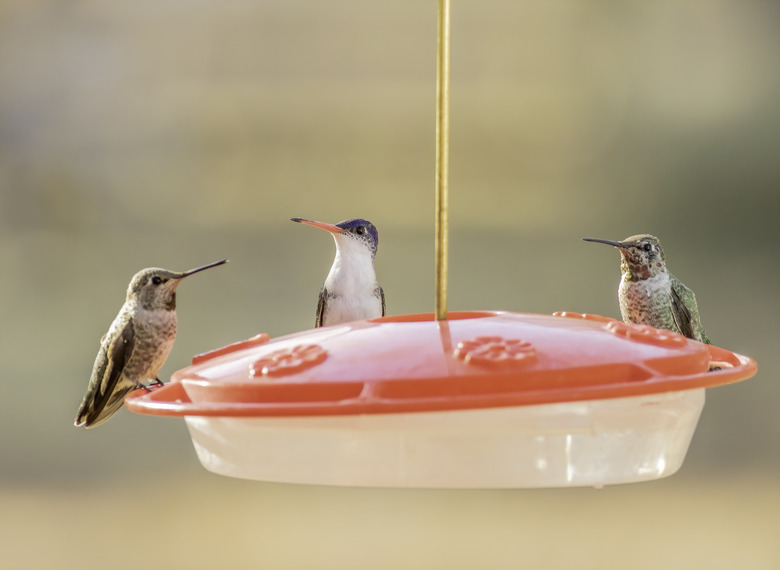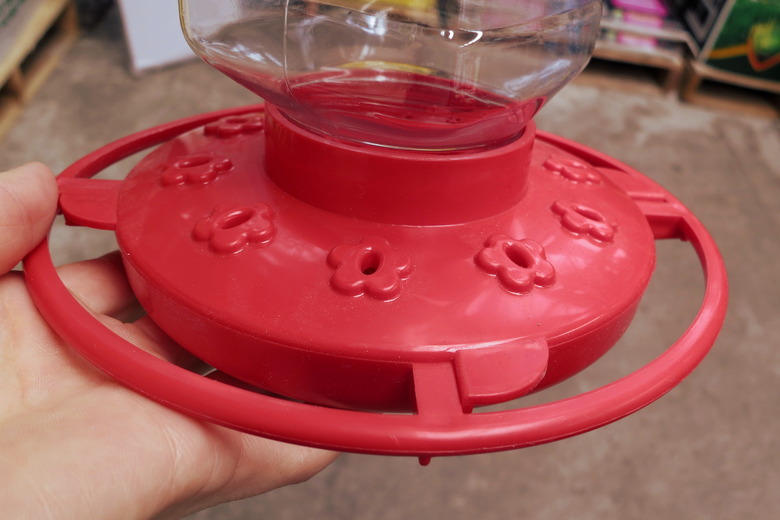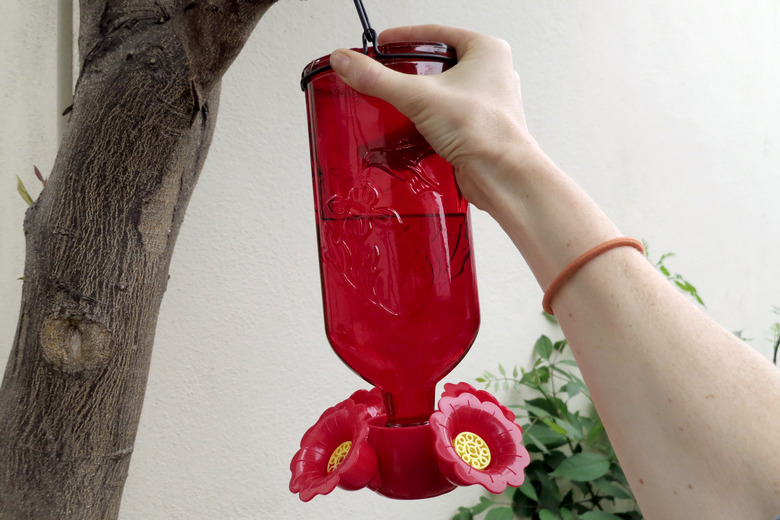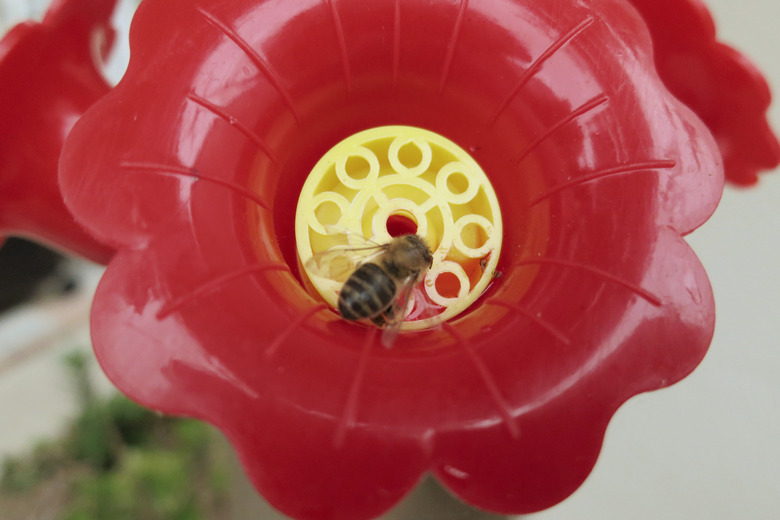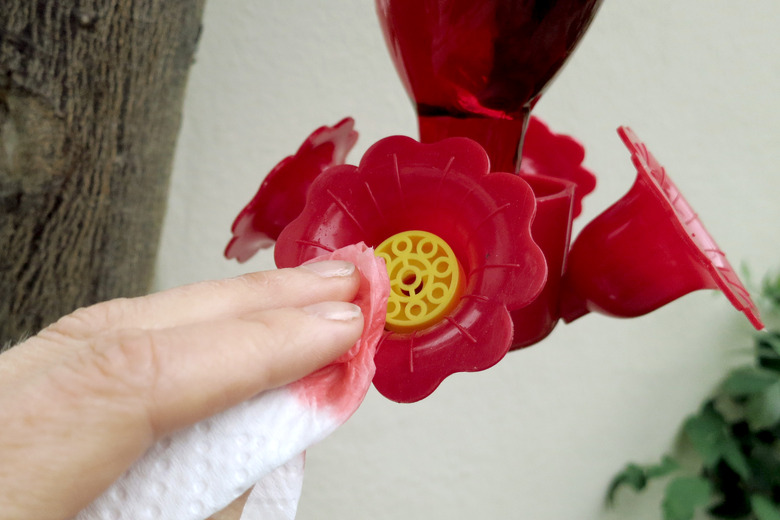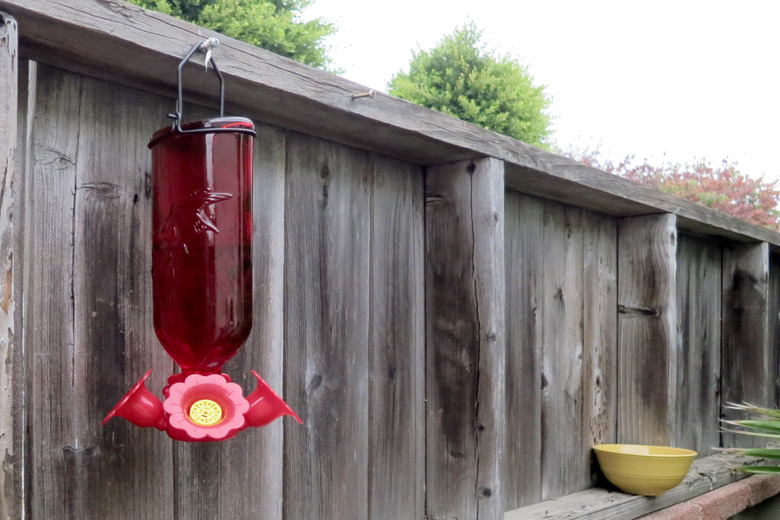How To Keep Wasps & Bees Off A Hummingbird Feeder
Energetic, colorful hummingbirds are some of the most delightful yard visitors — we could watch them buzz around for hours. They visit in order to feed on flower nectar, but you can still encourage them to visit even if you don't have flowers in your yard by hanging a hummingbird feeder near a window or patio.
When feeding hummingbirds, though, you may well find that bees, wasps, and yellow jackets are also drawn to the feeder, sometimes in numbers sufficient to scare away the hummers. Luckily, there are several measures you can take to keep these pests from ruining your chance to enjoy the beauty of hummingbirds.
Check Your Feeder Design
Check Your Feeder Design
It all starts with the right hummingbird feeder. One of the best ways to prevent bee and wasp problems is by using a saucer-shaped hummingbird feeder. With this design, the birds suck nectar through ports at the top of the feeder. Their long tongues can reach the sugary nectar at the bottom of the saucer, but the ports are too high for wasps and bees to reach the nectar. Harness the power of color to defend your feeder as well. Yellow attracts bees and wasps, so never use feeders colored yellow, or with decorative accents or fake flowers in yellow hues. Hummers favor red, so an all-red hummingbird feeder will draw the attention of these birds without catching the eyes of insect pests.
It's About Location, Location, Location
It's About Location, Location, Location
Hummingbirds are fast problem solvers — bees and wasps, not so much. Simply relocating the hummingbird feeder to a new location may solve the insect problem. The hummingbirds will quickly find its new spot while wasps and bees will get confused and not know where to go. Alternatively, take down the feeder for one or two days. This is generally long enough for bees and wasps to forget about the feeder.
Set Up Your Defenses
Set Up Your Defenses
Garden stores and nurseries sell bee guards for hummingbird feeders. These tiny grates come in red or yellow—never choose the yellow ones, as yellow attracts the problem insects—and sit over the feeding tubes on the feeder. The hummingbird's tongue can fit through the openings, but the grate blocks insects from poking their heads down the feeding tubes to access the nectar. As their name suggests, bee guards work most effectively against bees and have limited success against wasps.
Working at the Wasp Wash
Working at the Wasp Wash
Keep things clean. Dirty feeders are more likely to experience problems — leaking sugar nectar attracts wasps and bees and can lure the pests to the feeder. Inspect the feeder regularly for cracks and replace it with a new feeder if any leaks are present. Monitor the feeder on hot days when heat may cause the sugar nectar to expand and overflow out of the feeder. Wipe away drips and leaks as soon as they're noticed. Finally, wash and rinse the outside of the feeder thoroughly every few days.
Set Up a Decoy
Set Up a Decoy
As the common saying goes, if you can't beat 'em, join 'em. Set out a yellow bowl—the color of choice for these pests—in the sun, approximately six feet away from the hummingbird feeder. Fill it with an extra-strength sugar solution. Anything that's stronger than a 5-to-1 water-to-sugar ratio is effective as a wasp and bee bait. The wasps and bees will choose the easily accessible nectar in the yellow bowl over the less-attractive red hummingbird feeder with bee guard installed, leaving the hummingbirds to eat in peace.
